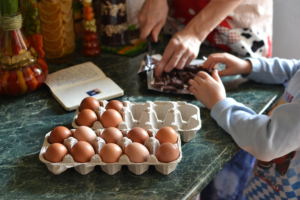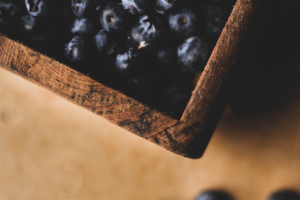
What better way to kickoff Kids Eat Right Month than to take a closer look at one of the newest toddler food and beverage trends hitting the shelves!
If you haven’t heard of “toddler milk” yet, you soon will. According to the World Health Organization (WHO), toddler milk is the fastest-growing category of break milk substitutes currently on the market. As a parent or caregiver, you may be wondering what exactly toddler milk is and if this product is a good choice for your child. To help answer this question, the WHO, the American Heart Association (AHA), and the American Academy of Family Physicians (AAFP) are all weighing in and the answer may surprise you.
What Exactly is “Toddler Milk”?
Toddler milk, also known as “growing up” milk, is a category of products marketed to children between the ages of 12 and 36 months. They can be found alongside infant and transition formulas and are often made by the same manufacturers that we as consumers know and trust. Their nutritional make-up consists primarily of powdered low-fat milk, corn syrup solids or other caloric sweeteners, and vegetable oil. They often have added nutrients such as DHA, vitamin E, and probiotics, to name a few, and many come with statements such as “no artificial growth hormones”, “organic” and “non-GMO” that consumers may be intrigued by.
Current Nutritional Recommendations for Toddlers
So how do toddler milks stack up against current nutritional recommendations? Presently, the recommendation for children 12 months and older is plain whole cow’s milk and the introduction of healthy and appropriate solids. Whole milk provides an excellent source of calcium and vitamin D for strong bones as well as protein and fat for overall growth and brain development. In addition, the American Heart Association recommends avoiding added sugars (including the corn syrup solids in toddler milks) for children under the age of 2 years.
What’s the Big Deal?
Compared with plain whole cow’s milk, research is finding that a large majority of toddler milks on the market today contain added sugar, more sodium, and less protein. One concern that experts share is in regard to the development of long-term taste preferences. This comes from the idea that the first 1,000 days of life are the most important in terms of the development of healthy eating patterns and preferences. Because of this, children may be more inclined to consume sweetened beverages, which may result in negative outcomes for weight down the road. In addition, packaging may contain claims, such as ‘probiotics to help support digestive health’, which are not supported by scientific research at this time.
Additional Food for Thought…
As breastfeeding rates have increased, the demand for infant formula has dropped dramatically. Because of this trend, many formula manufacturers are turning to alternative products to make up for the lost revenue. In terms of marketing, toddler milks tend to look very similar in color, branding, logo, and graphics compared to infant formulas and often cost less by volume. Interestingly, the U.S. has a regulatory body responsible for food labeling and policy-making for infant formula, but unfortunately has no laws specific to toddler milks at this time. Based on research published in April of 2020 from the Journal of Public Health Policy, one can see that “advertising spending on toddler milks increased fourfold during a 10-year period (2006-2015) and volume sales increased 2-6 times”. As a result of less demand for infant formula, increased marketing of toddler milks with lower prices and unfounded health benefits, the question is raised as to whether or not parents of infants may opt to purchase toddler milk instead of formula, putting infants at risk for inadequate nutrient intake.
Lastly, while the AAFP notes that toddler drinks hold no “advantage” over whole milk and a nutritionally adequate diet, food sensitives and allergies may cause one to turn to alternative milk products. In this case, we suggest talking with your Pediatrician and Registered Dietitian about the best options for you and your family. For more information on nutritional recommendations for toddlers and children, visit ChooseMyPlate.gov.
AS


 when all you really need is gas could put you at a higher risk of contracting the
when all you really need is gas could put you at a higher risk of contracting the 

